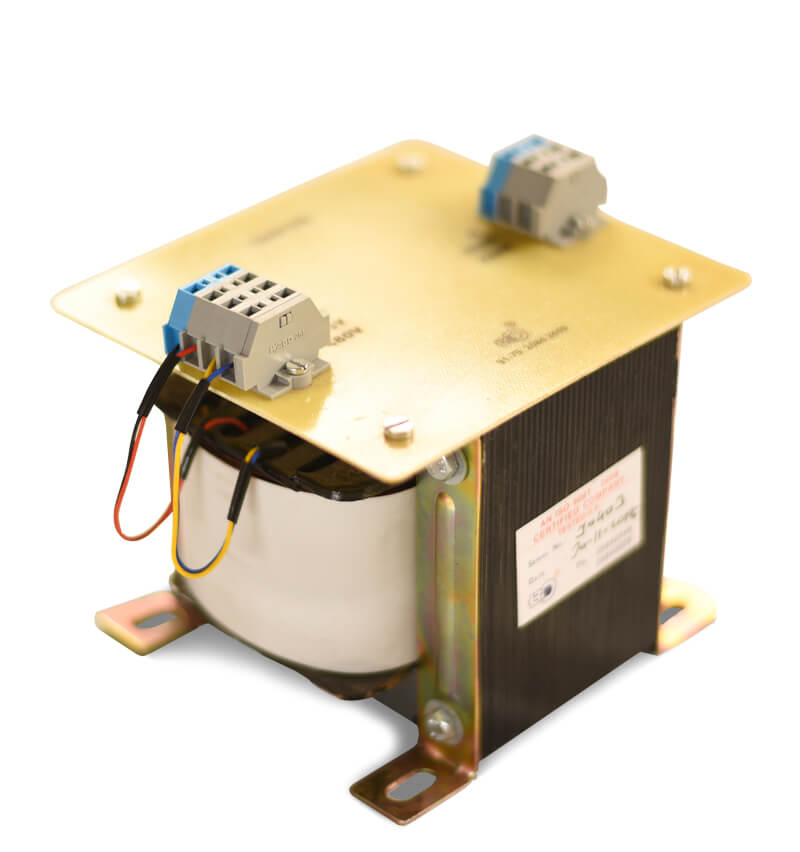Powering the Future: Unlocking the Potential of Transformers
In the intricate web of modern electrical infrastructure, transformers stand as undisputed champions, quietly enabling the seamless flow of power that we so often take for granted. These remarkable devices, designed to transfer electrical energy between circuits while effortlessly adjusting voltage levels, are the backbone of our electrical systems, facilitating the efficient distribution and regulation of power across vast distances.
Transformers are the silent workhorses that power our homes, businesses, and industries, ensuring that the electricity we rely on day in and day out is precisely tailored to meet our diverse needs. Whether stepping up voltages for long-distance transmission or stepping them down for safe, consumer-level use, and these extraordinary machines are the invisible conductors orchestrating the symphony of electricity that surrounds us.
In this comprehensive exploration, we examine into the inner workings of transformers, looking at the principles that govern their operation and the various types that have been engineered to cater to the unique requirements of modern electrical infrastructure. From the robust liquid-filled giants that power our utility grids to the compact, air-cooled devices that provide reliable power in sensitive environments, we’ll uncover the nuances that make each transformer variant uniquely suited to its intended application.
The Transformative Power of Electromagnetic Induction
At the heart of every transformer lies the principle of electromagnetic induction, a phenomenon first observed by the pioneering physicist Michael Faraday in the 19th century. Faraday’s law states that a changing magnetic field within a coil induces an electromotive force (EMF) in a nearby coil, providing the fundamental basis for transformer operation.
Transformers harness this principle by consisting of two sets of coils – the primary and secondary windings – wrapped around a common magnetic core. When an alternating current (AC) flows through the primary winding, it generates a fluctuating magnetic field that, in turn, induces a current in the secondary winding. The key to the transformer’s versatility lies in the ratio of turns between the primary and secondary coils, which determines the voltage transformation:
#1. Step-up Transformer
If the secondary winding has more turns than the primary, the voltage is increased, enabling efficient long-distance power transmission.
#2. Step-down Transformer
Conversely, if the secondary winding has fewer turns, the voltage is decreased, making it suitable for safe, consumer-level applications.
This ingenious design allows transformers to seamlessly bridge the gap between high-voltage transmission and low-voltage utilization, ensuring that electricity is delivered to end-users at the appropriate and safe levels.
Liquid-Filled Transformers: Powering the Grid
One of the most prevalent and versatile transformer varieties is the liquid-filled transformer, a workhorse of the power distribution industry. These transformers employ a dielectric insulating liquid, typically mineral oil, to serve a dual purpose: cooling the internal components and providing superior insulation, enabling more compact and efficient designs.
Liquid-filled transformers excel in high-voltage, high-power applications, making them the preferred choice for utility substations, industrial facilities, and large-scale renewable energy projects. Their ability to handle heavy loads and operate at elevated voltages is a testament to their robust engineering and the unique properties of the insulating liquid.
The construction of a liquid-filled transformer begins with a core made of laminated soft iron, which provides a low-reluctance path for the magnetic flux. The primary and secondary windings are then wrapped around this core and submerged in the dielectric liquid, which fills the transformer tank. As the alternating current flows through the primary winding, the resulting magnetic field induces a current in the secondary winding, allowing for the desired voltage transformation.
The insulating liquid plays a crucial role in the transformer’s performance, not only dissipating the heat generated during operation but also enhancing the dielectric strength of the system. This liquid insulation enables liquid-filled transformers to operate at higher voltages and power levels, making them the backbone of modern power grids and industrial electrical systems.
Dry-Type Transformers: Versatile and Environmentally Friendly
In contrast to their liquid-filled counterparts, dry-type transformers eschew the use of insulating liquids, opting instead for air or solid insulation materials. This design approach caters to applications where space is limited, environmental conditions pose risks to liquid-filled transformers, or where a safer, more environmentally friendly solution is required.
Dry-type transformers rely on natural air ventilation or forced air cooling to dissipate the heat generated during operation, eliminating the need for oil or other liquids and the associated maintenance and environmental concerns. Their windings are typically encapsulated in epoxy resin or varnish, providing excellent insulation and protection against moisture, dust, and other contaminants.
One of the key advantages of dry-type transformers is their inherent safety. With no flammable liquids involved, they present a significantly lower fire hazard compared to liquid-filled models, making them a preferred choice for installation in sensitive environments such as commercial buildings, industrial facilities, and renewable energy projects.
The robustness and durability of dry-type transformers are also notable. Their construction, which eschews liquid insulation, allows them to withstand the rigors of various environmental conditions and operate reliably for extended periods, often exceeding 25 years of service life under normal operating conditions.
While dry-type transformers may not match the cooling efficiency and power handling capabilities of their liquid-filled counterparts, they have carved out a niche in applications where safety, space constraints, and environmental considerations take precedence. As the demand for cleaner, more sustainable electrical infrastructure grows, the role of dry-type transformers is poised to expand, offering a compelling alternative that prioritizes safety and environmental stewardship.
Transforming the Future: Innovations in Transformer Technology
As the world’s reliance on electricity continues to deepen, the evolution of transformer technology has become increasingly crucial. Researchers and engineers are constantly exploring new frontiers, pushing the boundaries of transformer design and performance to meet the ever-changing demands of modern electrical systems.
One area of innovation is the development of superconducting transformers, which utilize materials with the remarkable ability to conduct electricity without resistance, virtually eliminating energy losses. These transformers, while still in the early stages of commercialization, hold the promise of unparalleled efficiency, reduced environmental impact, and the potential to revolutionize power transmission and distribution.
Another exciting advancement is the integration of digital technologies into transformer design and operation. Smart transformers, equipped with advanced sensors and integrated control systems, can now monitor their own health, optimize performance, and proactively respond to changes in load and grid conditions. This level of intelligence not only enhances reliability but also enables grid operators to make more informed decisions, leading to greater efficiency and resilience in electricity networks.
The growing demand for renewable energy has also spurred innovations in transformer technology. Specialized transformers designed to seamlessly integrate wind, solar, and other clean energy sources into the grid are crucial for enabling the transition to a more sustainable energy future. These transformers must contend with the variable nature of renewable generation, requiring advanced control systems and improved cooling mechanisms to ensure reliable and efficient power delivery.
As the global landscape continues to evolve, with increased emphasis on sustainability, energy efficiency, and grid modernization, the role of transformers will only become more critical. Researchers and manufacturers are rising to the challenge, leveraging cutting-edge materials, digital technologies, and innovative design approaches to create transformers that are more reliable, efficient, and environmentally friendly than ever before.
The Transformative Impact: Powering Progress, Empowering Communities
Transformers, though often overlooked, are the unsung heroes that power our world. From the bustling metropolises to the remotest corners of the globe, these remarkable devices play a vital role in ensuring that the electricity we rely on is available, reliable, and tailored to our diverse needs.
In the realm of utilities, liquid-filled transformers serve as the backbone of power grids, seamlessly stepping up voltages for long-distance transmission and then stepping them down for safe, localized use. These transformers are the silent workhorses that keep the lights on, factories running, and critical infrastructure operational, even in the face of growing energy demands and the increasing complexity of modern electrical systems.
For businesses and industries, transformers are the invisible enablers of progress. Whether powering data centers that drive the digital economy or providing reliable power to manufacturing plants that produce the goods we rely on, these unsung heroes are the unseen facilitators of economic growth and technological advancement.
In the realm of renewable energy, transformers play a pivotal role in integrating clean power sources into the grid. By adapting to the variable nature of wind and solar generation, these transformers ensure that the energy harvested from nature’s bountiful resources is efficiently distributed and utilized, contributing to a more sustainable future.
But the transformative impact of these devices extends beyond the realms of industry and infrastructure. In remote and underserved communities, transformers are often the linchpin that connects them to the wider electrical grid, empowering residents with access to reliable and affordable power. This access to electricity can be transformative, enabling advancements in healthcare, education, and economic opportunities, ultimately improving the quality of life for those who have historically been marginalized.
As we look to the future, the role of transformers will only become more critical. As the world grapples with the pressing challenges of climate change, energy security, and equitable development, these unsung heroes will be at the forefront of the solutions, powering progress and empowering communities around the globe.
As we navigate the complex challenges of the 21st century, the role of transformers will only become more vital. Whether it’s enabling the seamless integration of renewable energy sources, empowering remote communities with access to reliable electricity, or driving the innovation that will transform our energy landscape, these unsung heroes will be at the forefront of the solutions.
By understanding the nuances of transformer technology and the principles that govern their operation, we can unlock their full potential, harnessing their transformative power to build a more sustainable, equitable, and prosperous future. As we continue to push the boundaries of what is possible, let us celebrate the unsung heroes of the electrical world – the transformers that power our progress and empower our communities.






